
It’s been no easy feat designing a barren berm and transforming it into a pollinator paradise. But, five years later I’m happy to say it’s been a huge success.
Believe it or not, the depressing photo (left) is now one of my favorite areas of the garden (below.)
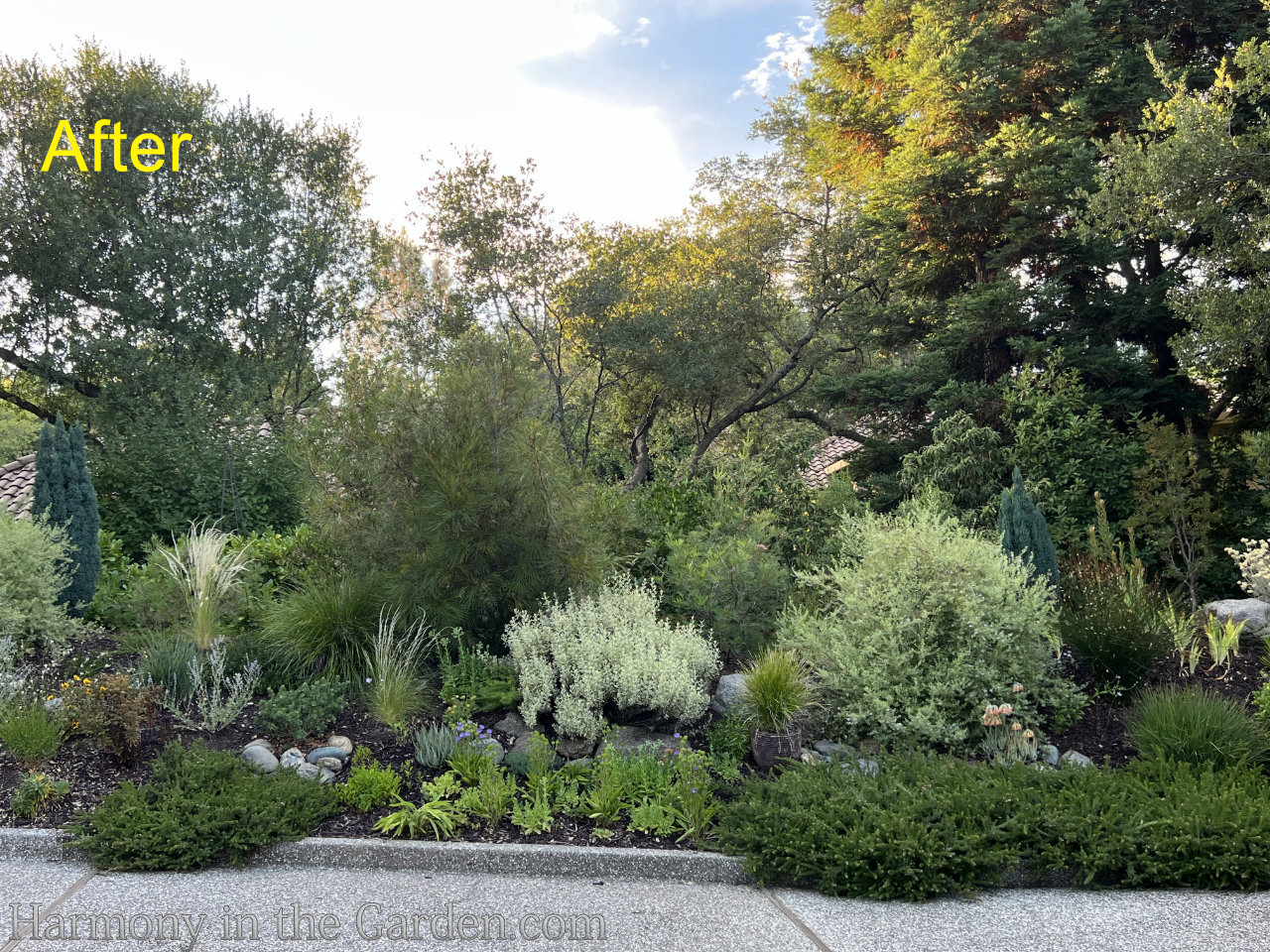

When designing gardens for others, I always like to include a berm whenever possible (click here, and scroll down for more berm examples.)
However, the berm I inherited wasn’t a subtle 14-16 inch high mound, but one with whopping dimensions of 70-feet long by 5-high.
Overwhelming, to say the least.
Other challenges that I had to contend with were:
1) BLISTERING summer heat in full sun (think 110-degree days during a heatwave)
2) deer who have no problem grazing their way up the berm, and
3) the worst soil in the world.
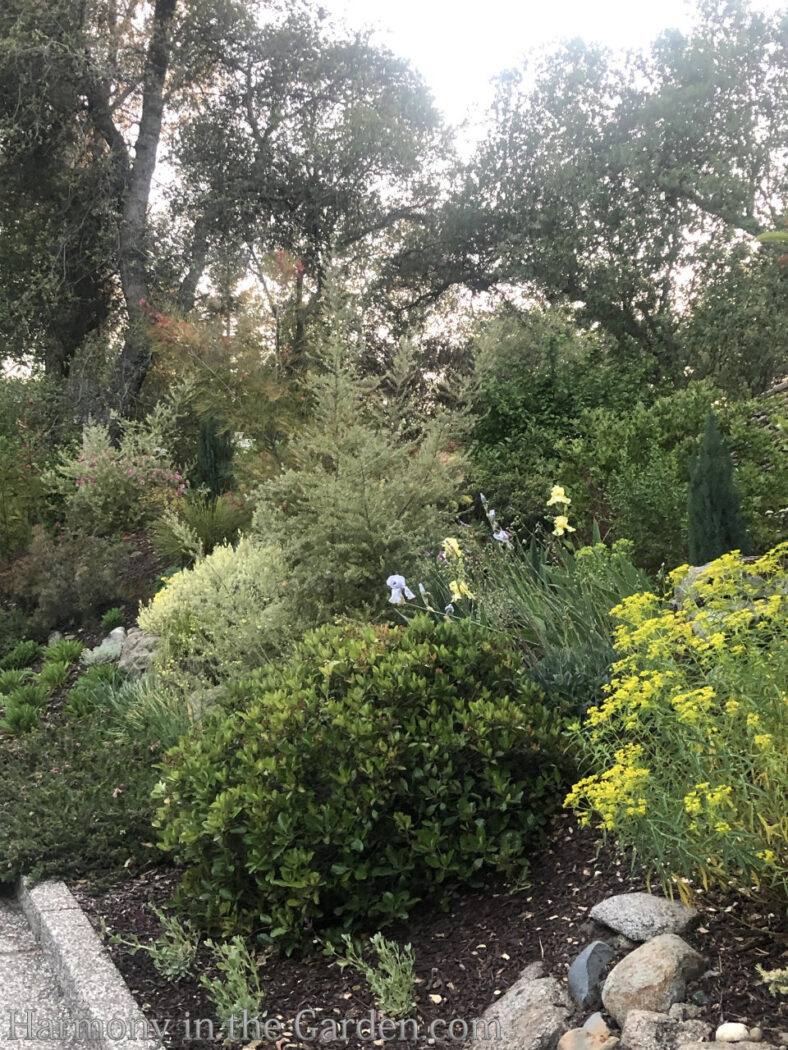
So first thing’s first – I had to clean up this mess
I removed the faded dyed black bark (below.) I don’t like using black mulch as it quickly fades in our hot sun and ends up looking like it went through a fire – not a good look!
I prefer using fir mulch as it blends in with the surrounding oak trees in my garden.
I’ve even used shredded mulch made from my fallen oak trees (in 5 years, I’ve lost 3 large trees in wind storms.)

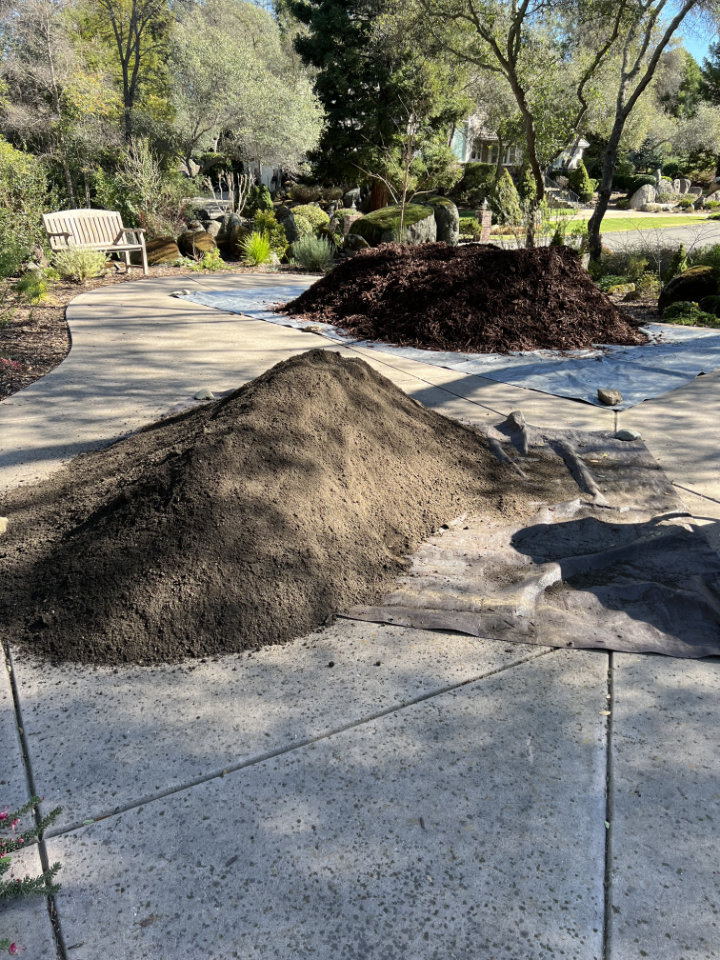
The next step was to Amend, Amend, Amend!
Having spent the past four years digging in this berm, it appears the original owners built this berm using any extra fill dirt they had, broken river rocks, and remnants of concrete.
You should see how depressing my soil test results were – almost zero nutrients whatsoever!
So, for every hole that I’ve dug, I made sure to add in plenty of nutrient-rich soil.
In fact, as I’m sure the original soil I added four years ago is long-gone, I spent the past week amending each plant with a generous amount of compost.
Ideally, late fall/early winter is the best time to do this, taking advantage of the winter rain to help water in the compost. But hey – better late than never, right?
And, since it seems we’re in for another drought this year, I also added another few inches of mulch to my garden.
This helps the soil to retain moisture longer, keep the soil cooler, and helps prevent weeds.
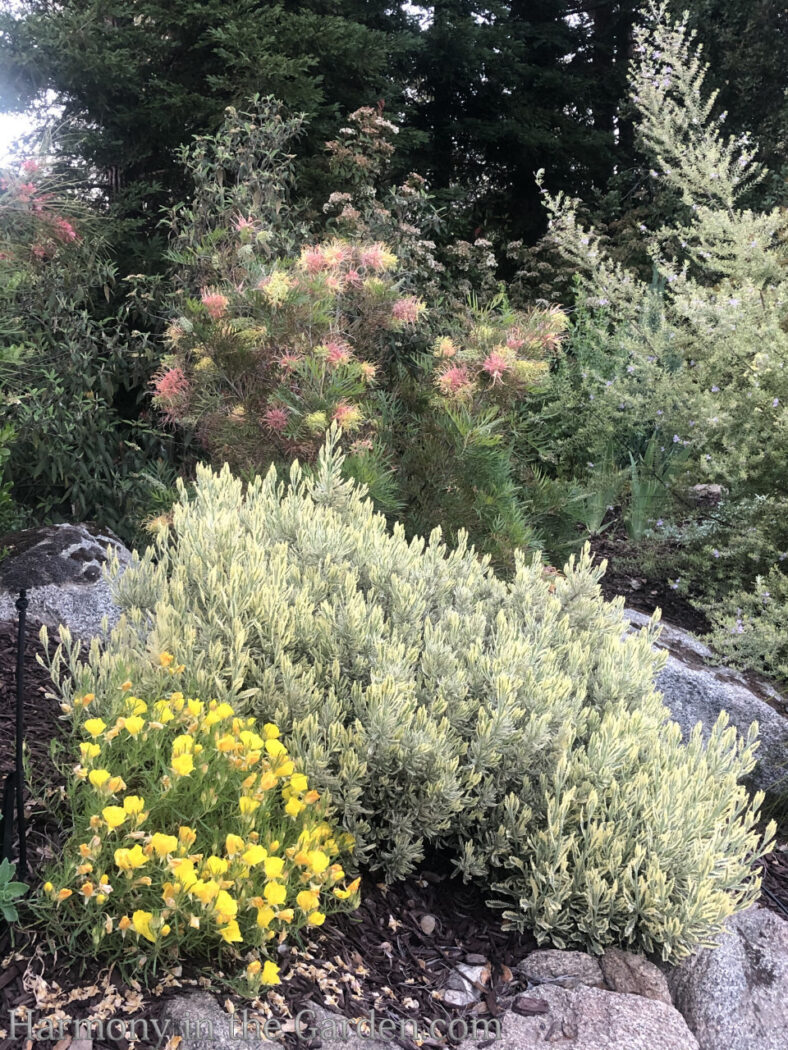
Next up – Creating Privacy as well as a Safety Barrier
It quickly became apparent that I needed to create a safety barrier in the form of privacy from Joe, our neighbors’ super aggressive German Shepherd.
Normally I love all dogs, but theirs is the meanest dog I’ve ever seen, and given half a chance, would bound over the fence to attack us.
So, screening us from his sight was a given.
In addition to the privacy, I wanted to get the permanent ‘bones’ of this long bed in place, adding year-round structure to the border.
Below are some of the evergreen shrubs that I’ve used as tall, dog-blocking anchors.
(BTW: when designing gardens, my #1 request is for help creating privacy in the garden. If you’d like to read more, click here.)


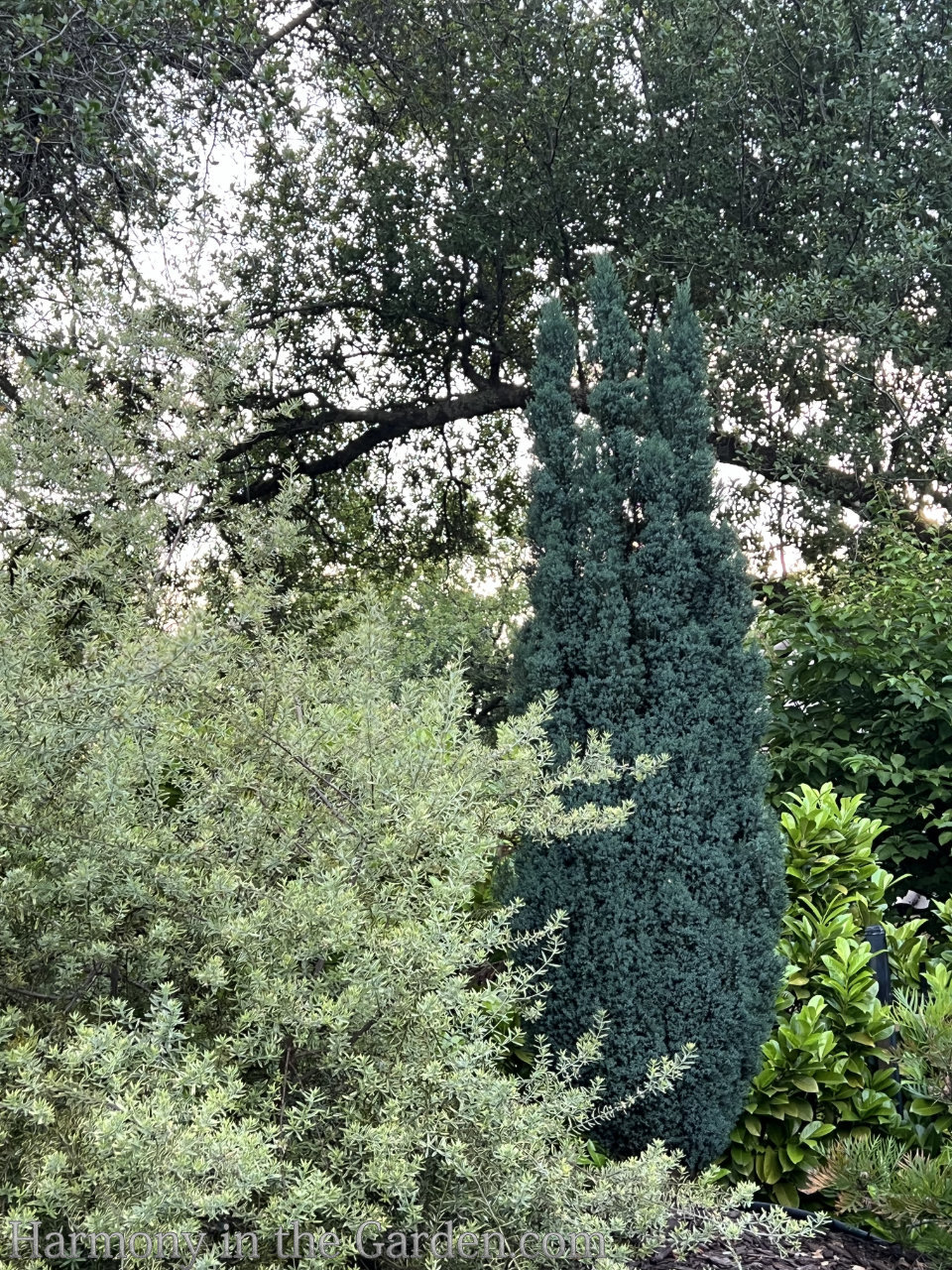


Create harmony with the adjacent garden bed
The entire length of my garden consists of this berm and the adjacent ‘valley’ that dips down forming my ‘modified meadow’ (left) which you can read more about here.
Therefore, it was critical that the plants I chose for the berm harmonized with the neighboring bed.
To prevent things from looking overly busy, I use echoes to knit the two areas together.
Whether using a few plants throughout both beds to add consistency, or creating echoes with color, texture, or form – the result is a tapestry that’s diverse yet harmonious.
And, as with the other areas in my garden, these plants also need to be deer-resistant, low-water, and tough as nails AND attract pollinators.
Here’s some of the plants that have done really, really well over the past few years, and the insects who visit them:
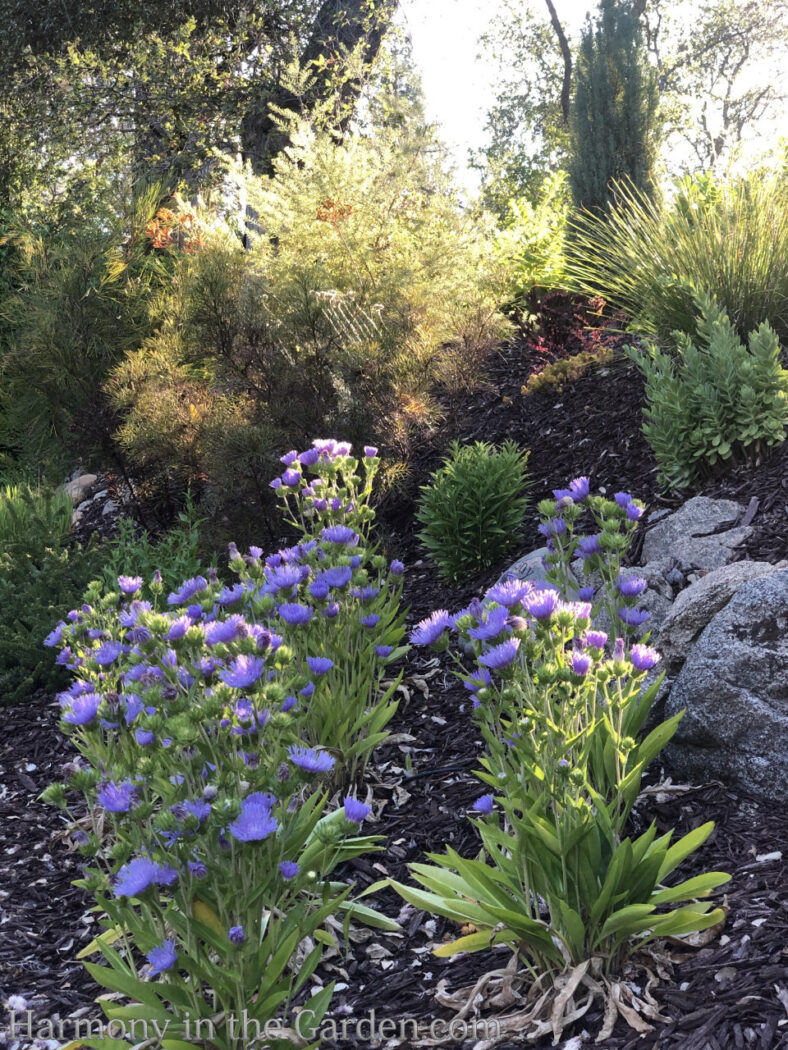
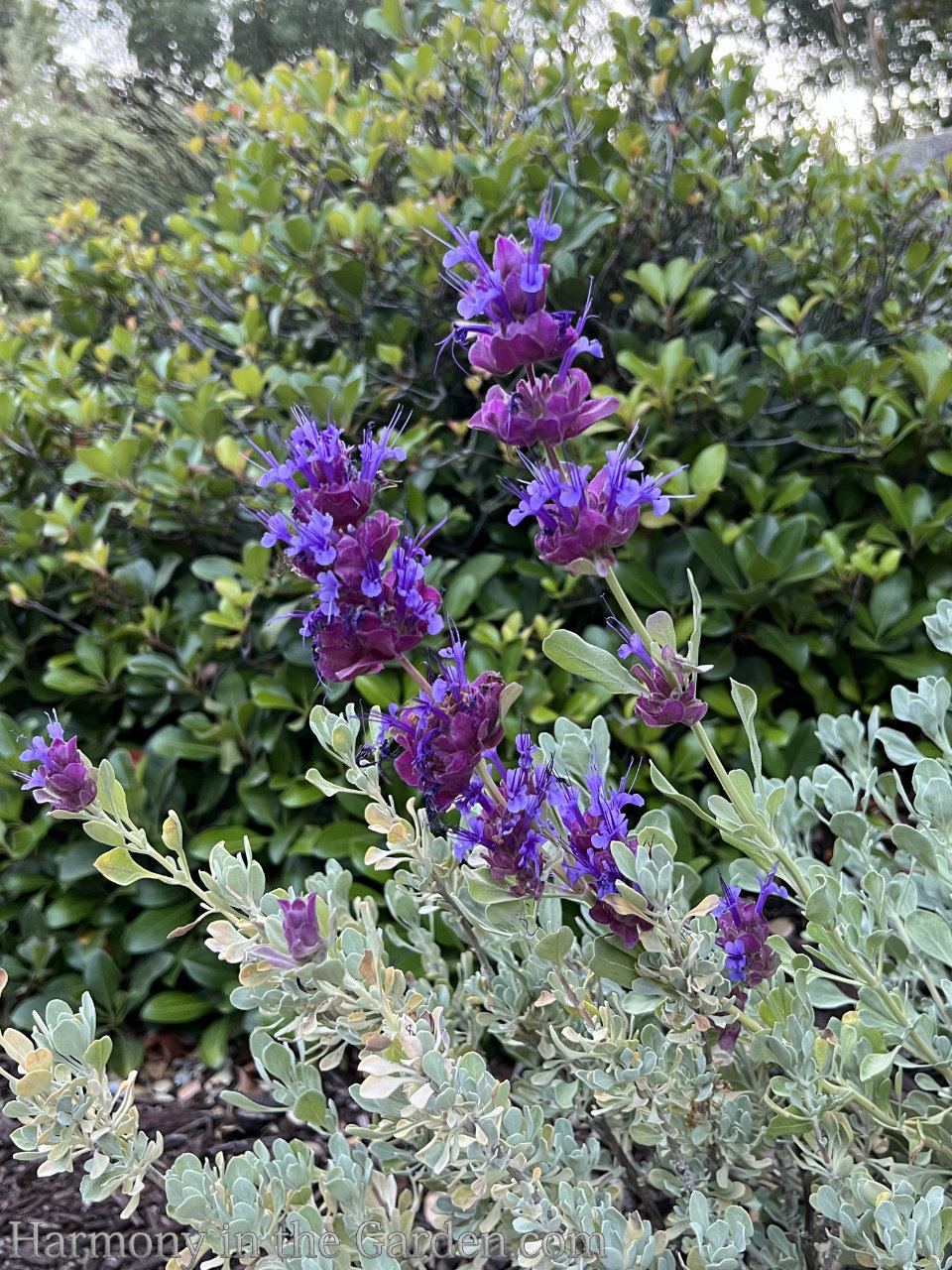


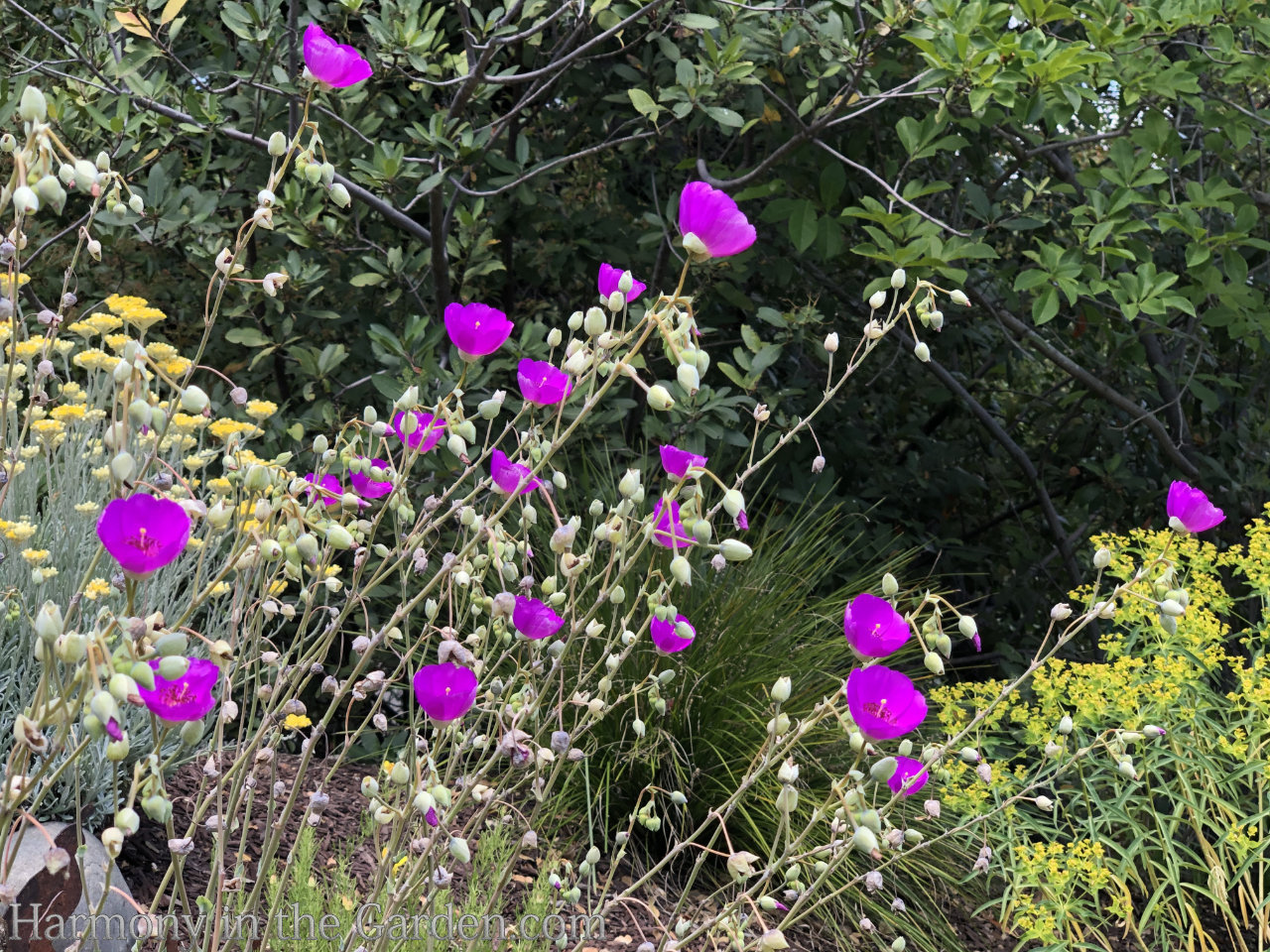
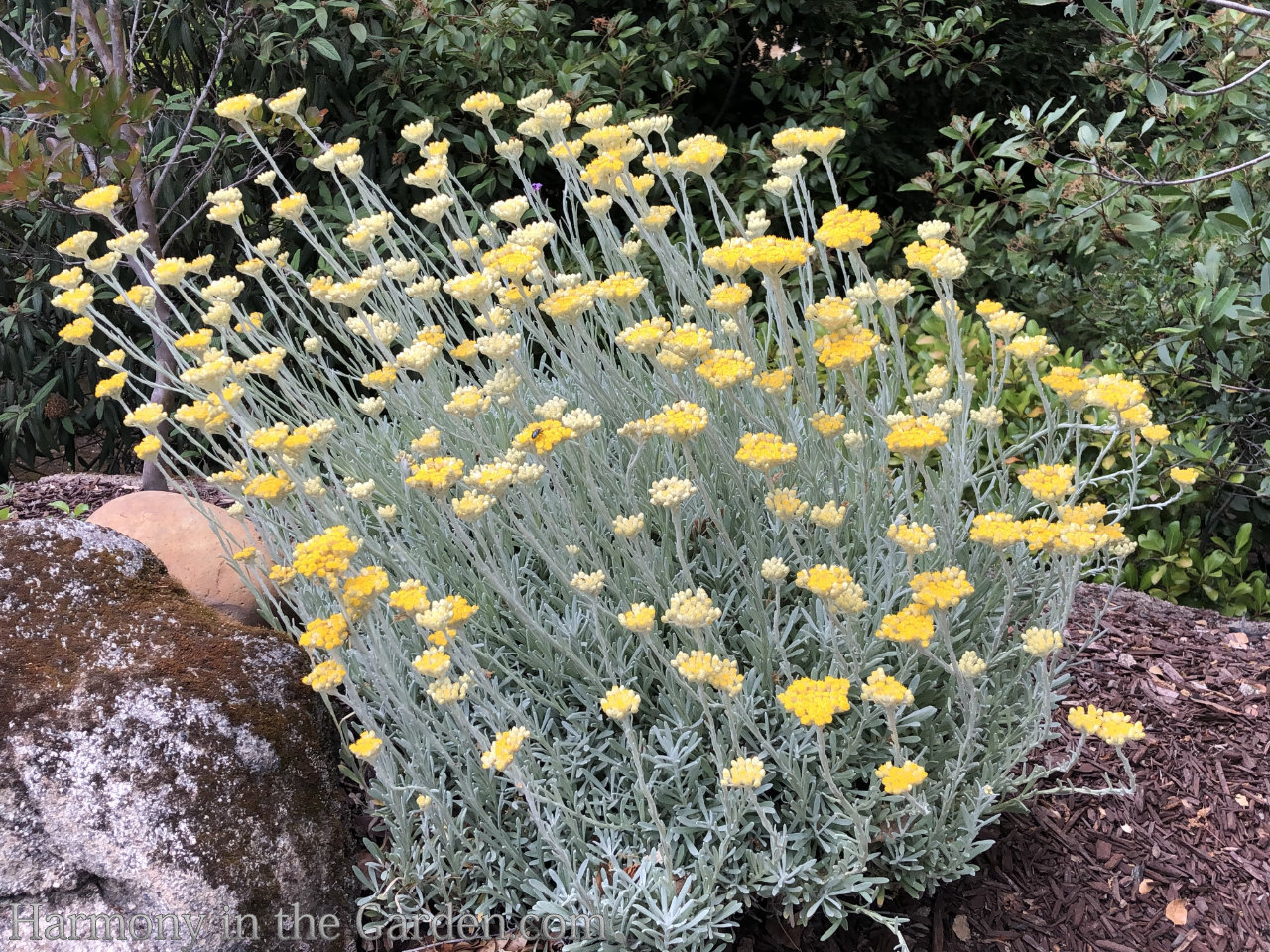
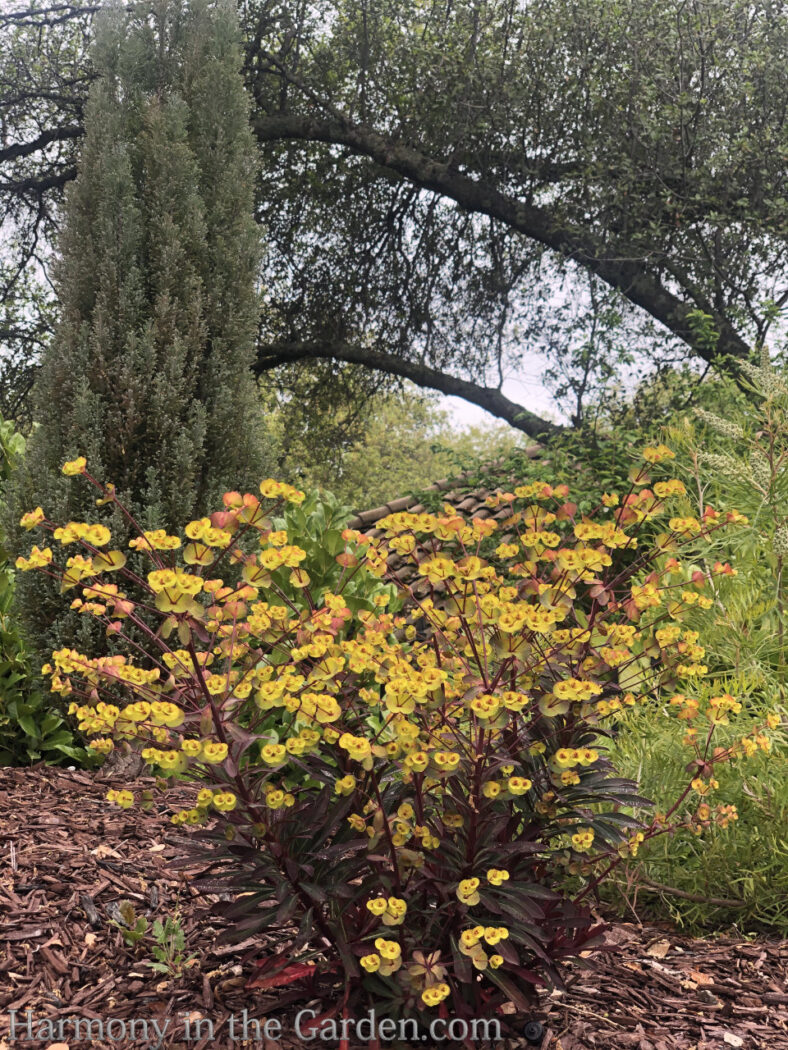
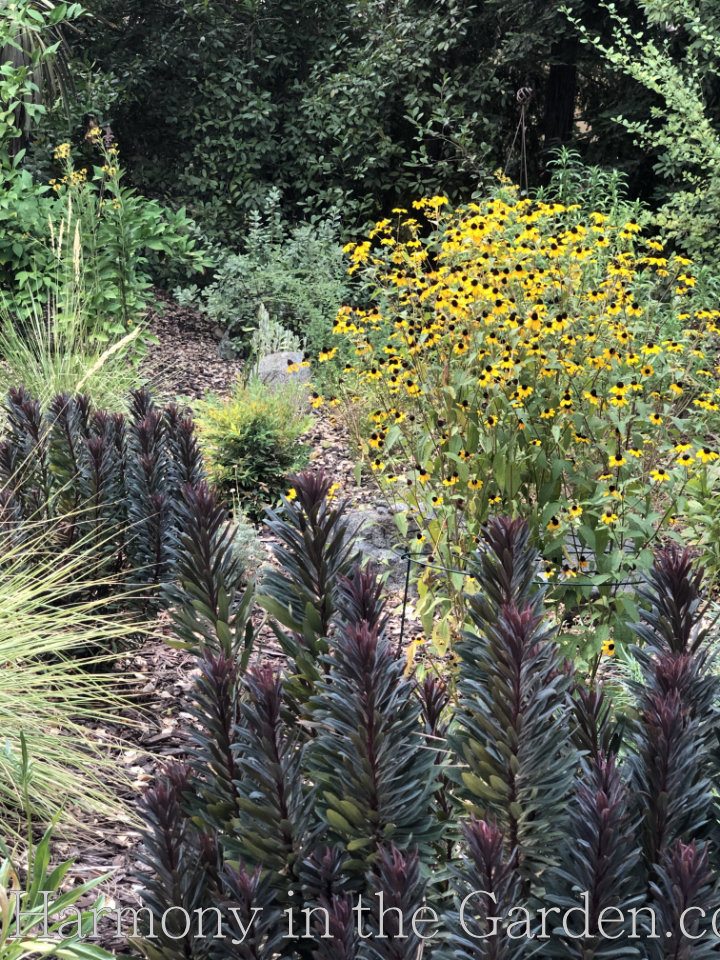
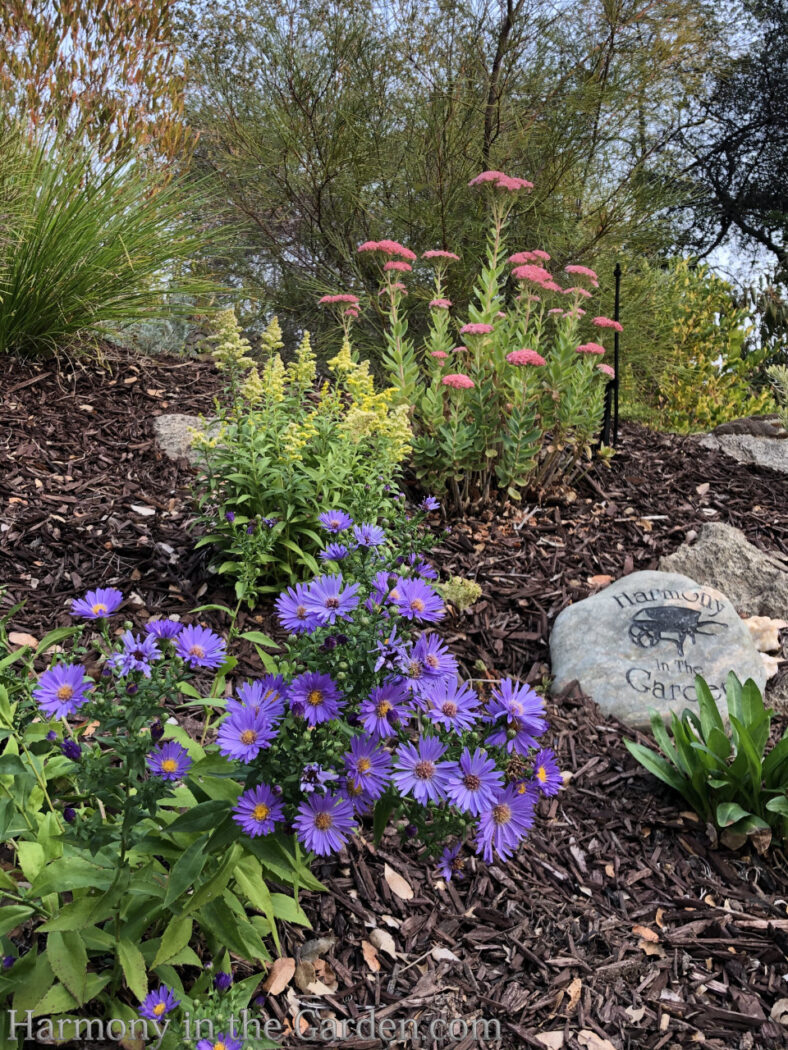
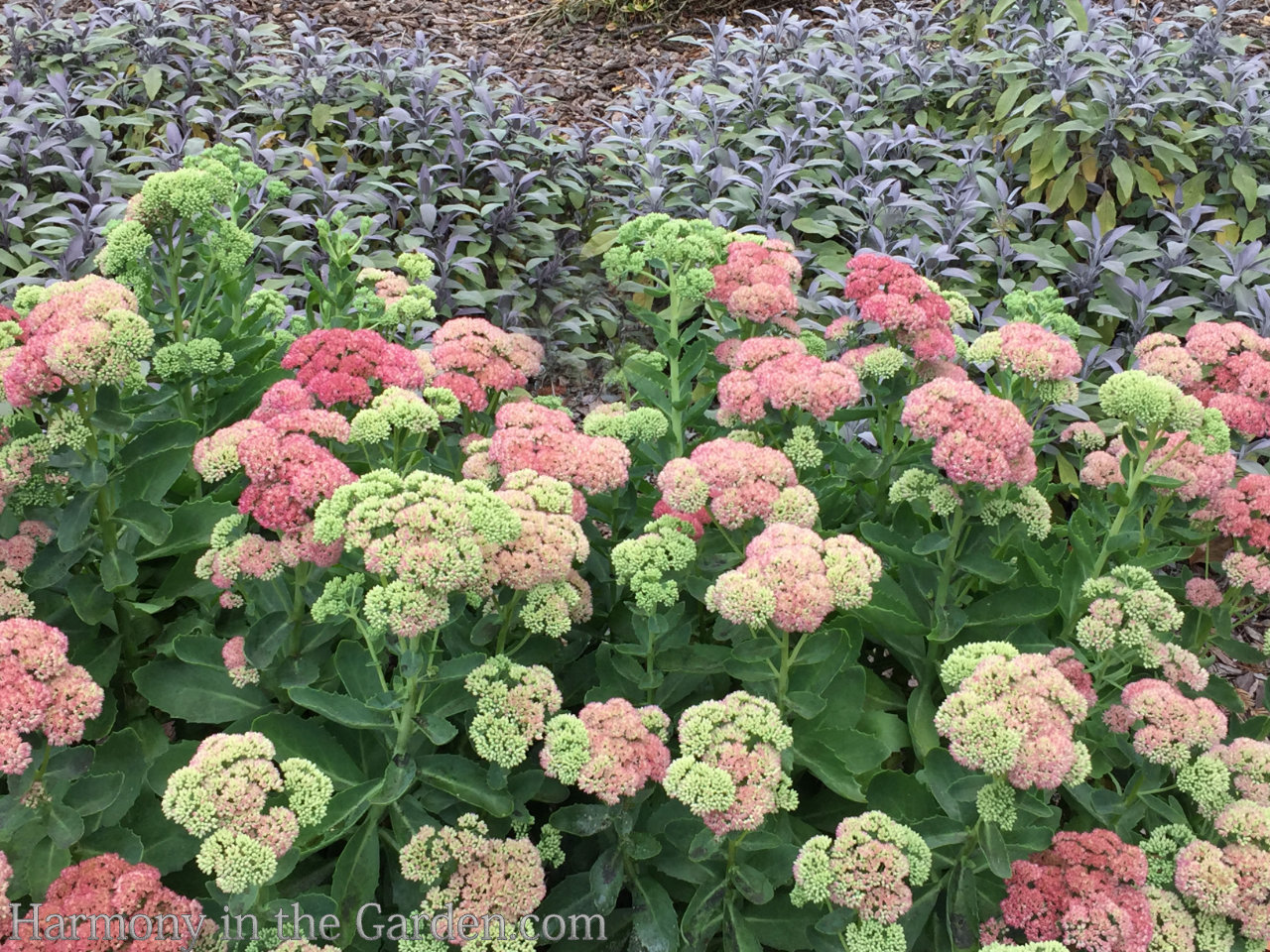
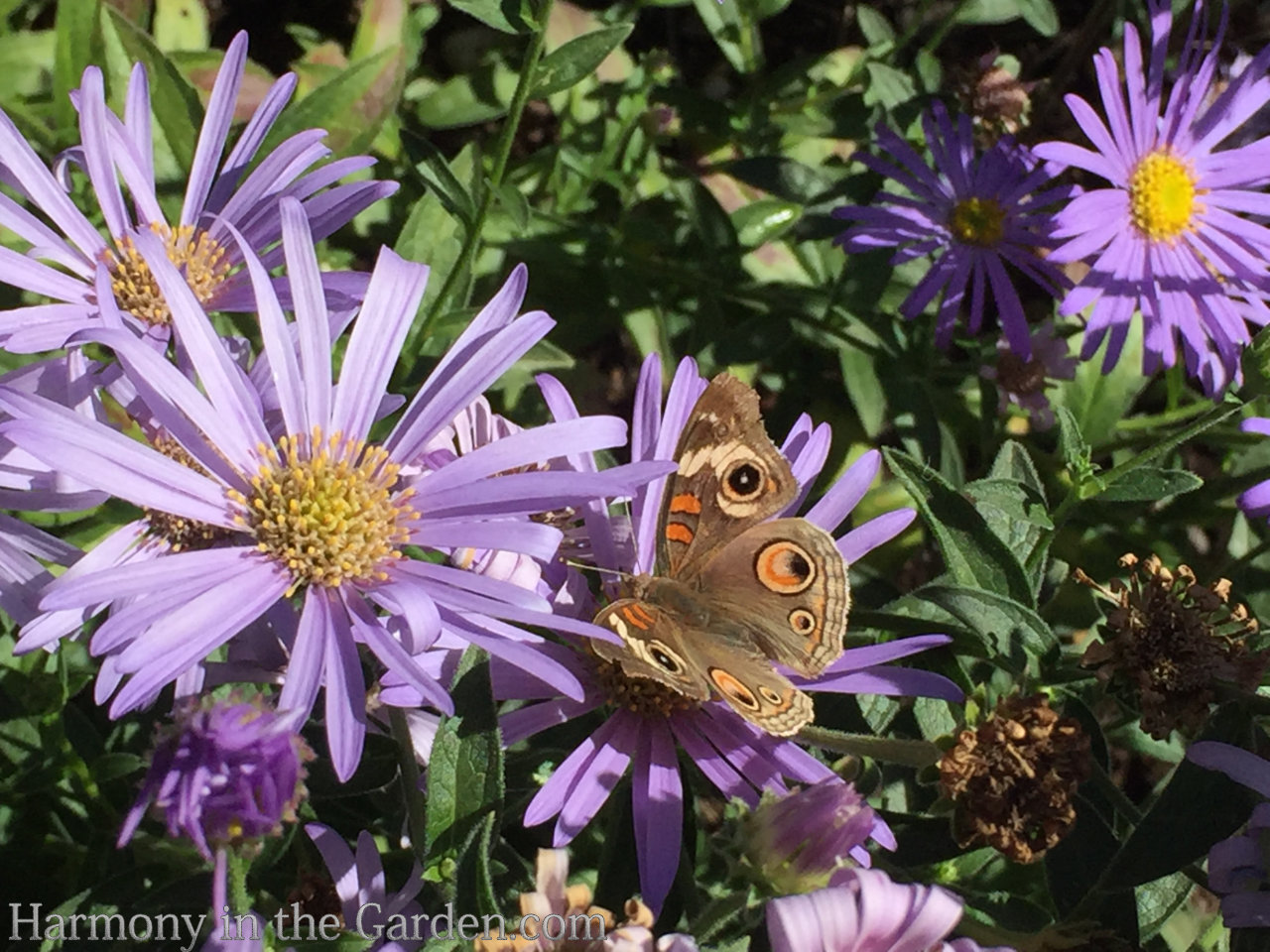

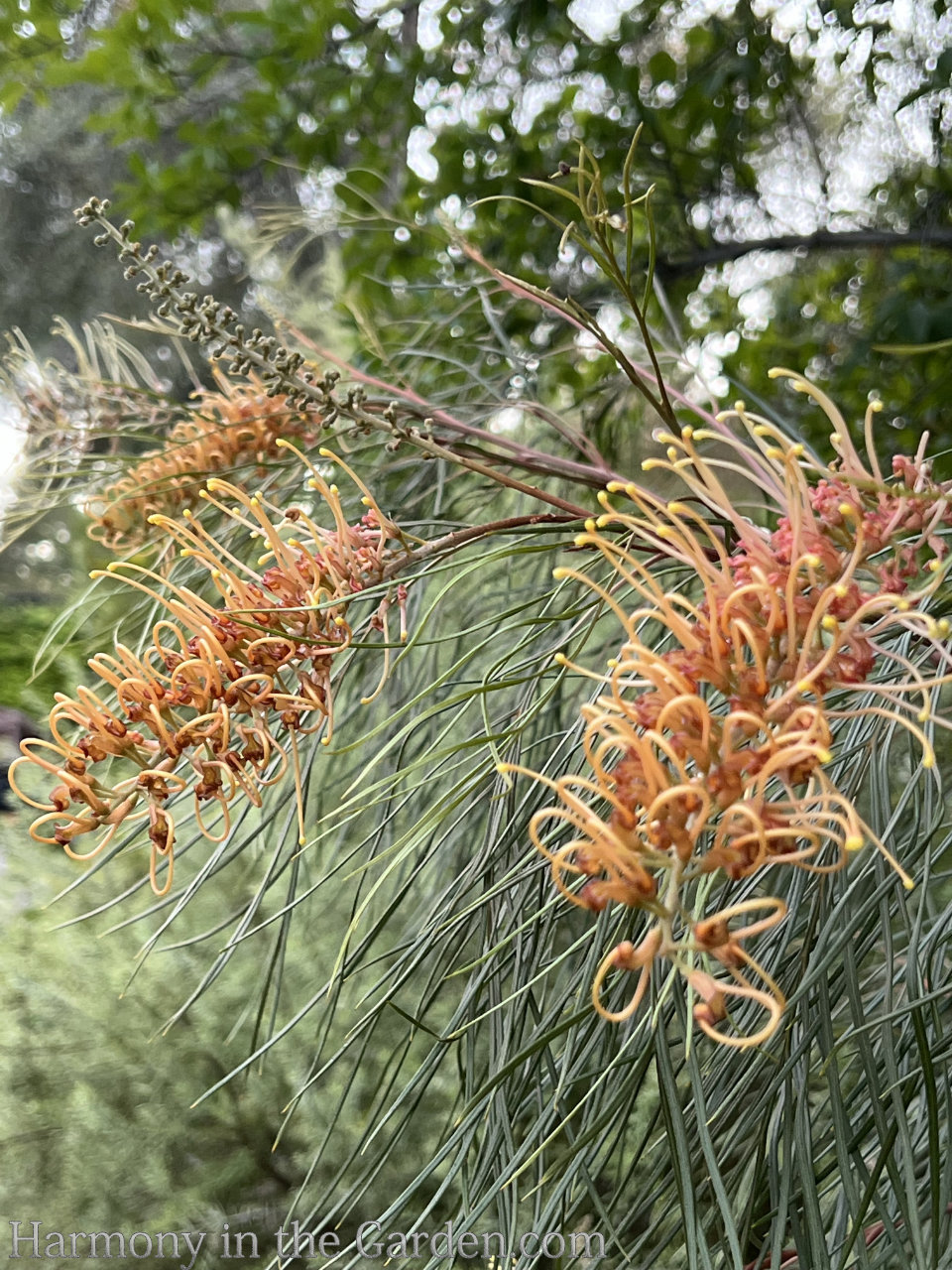
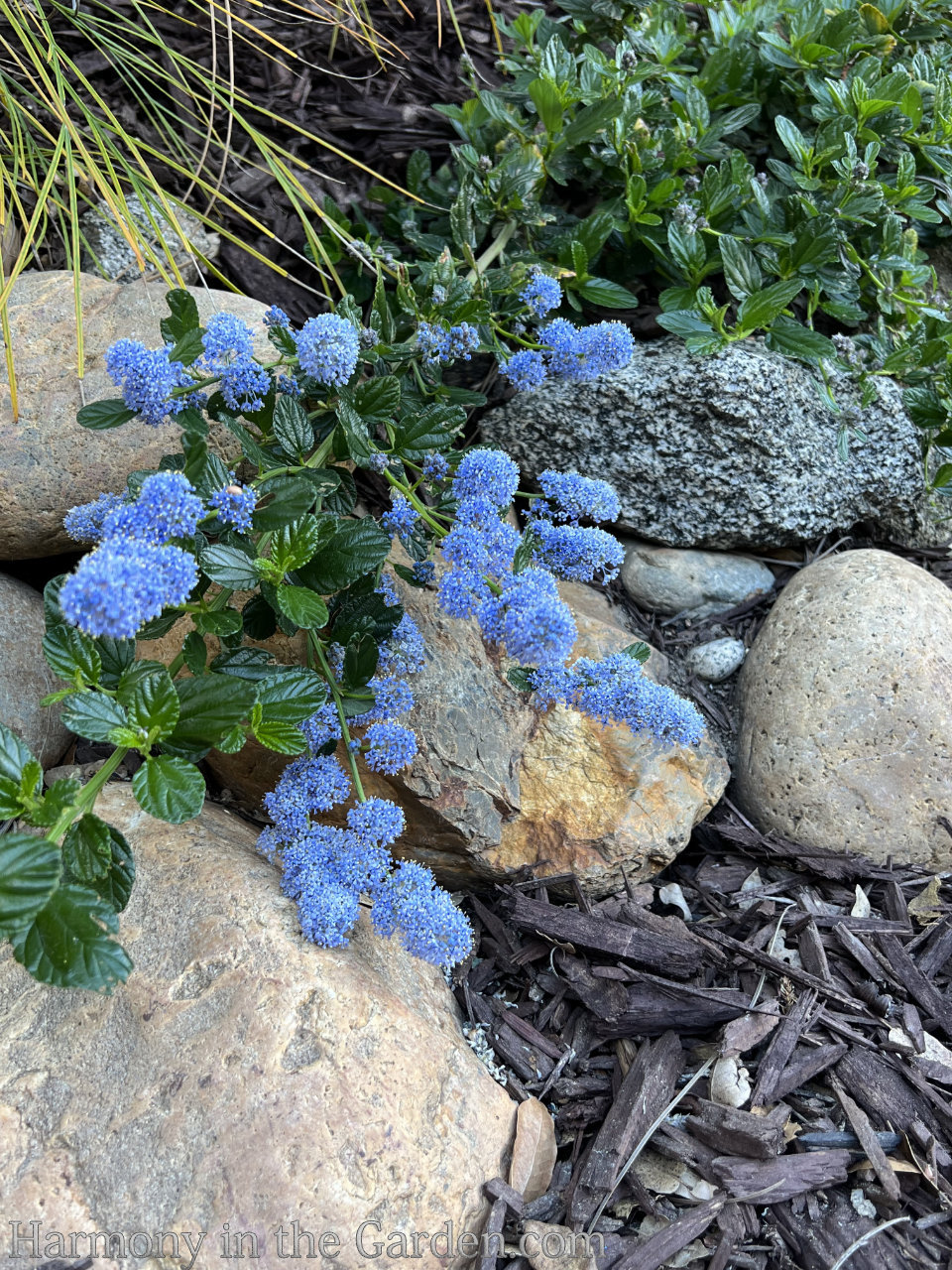


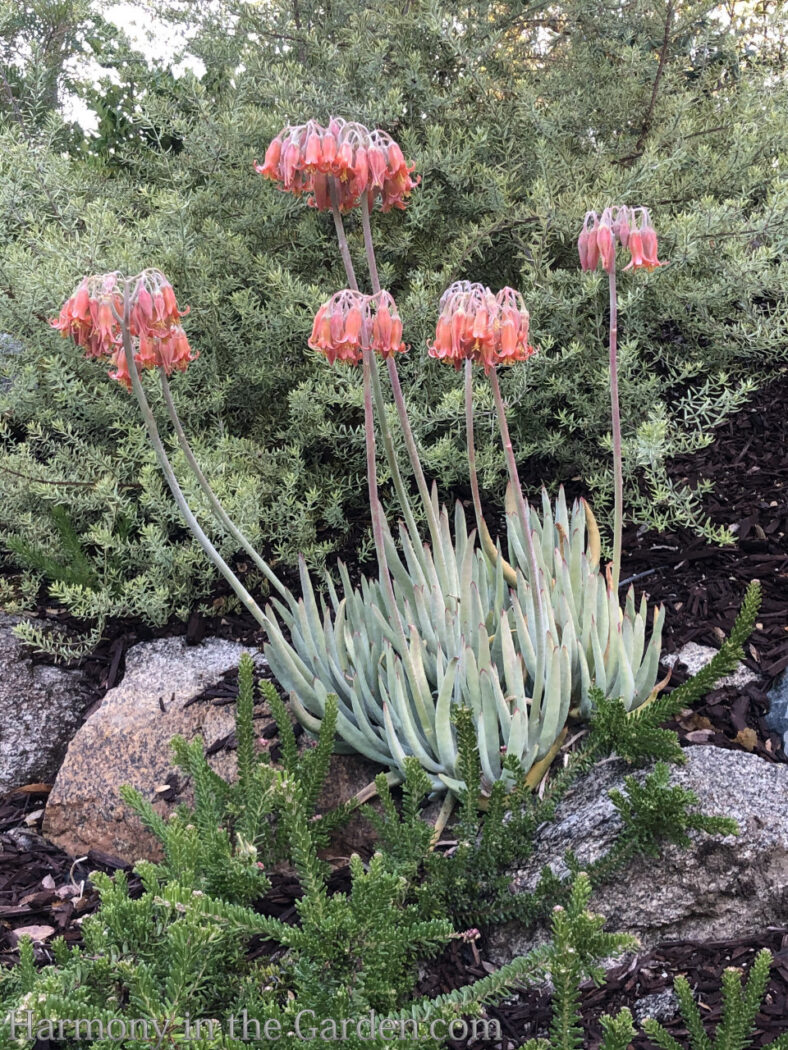


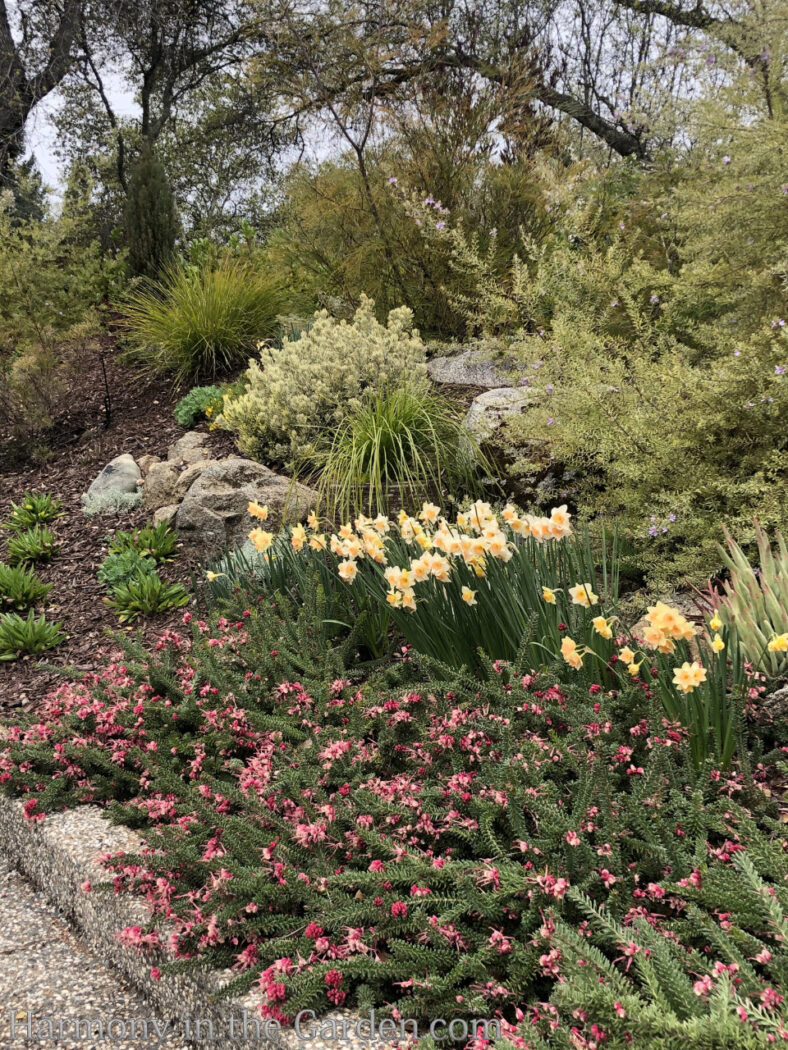

Thanks for joining me on this tour of my favorite part of the garden!
Oh , I almost forgot! Last summer I made this video which shows both the berm and the valley portion of my garden. I hope you enjoy it!
Happy Gardening, everyone!
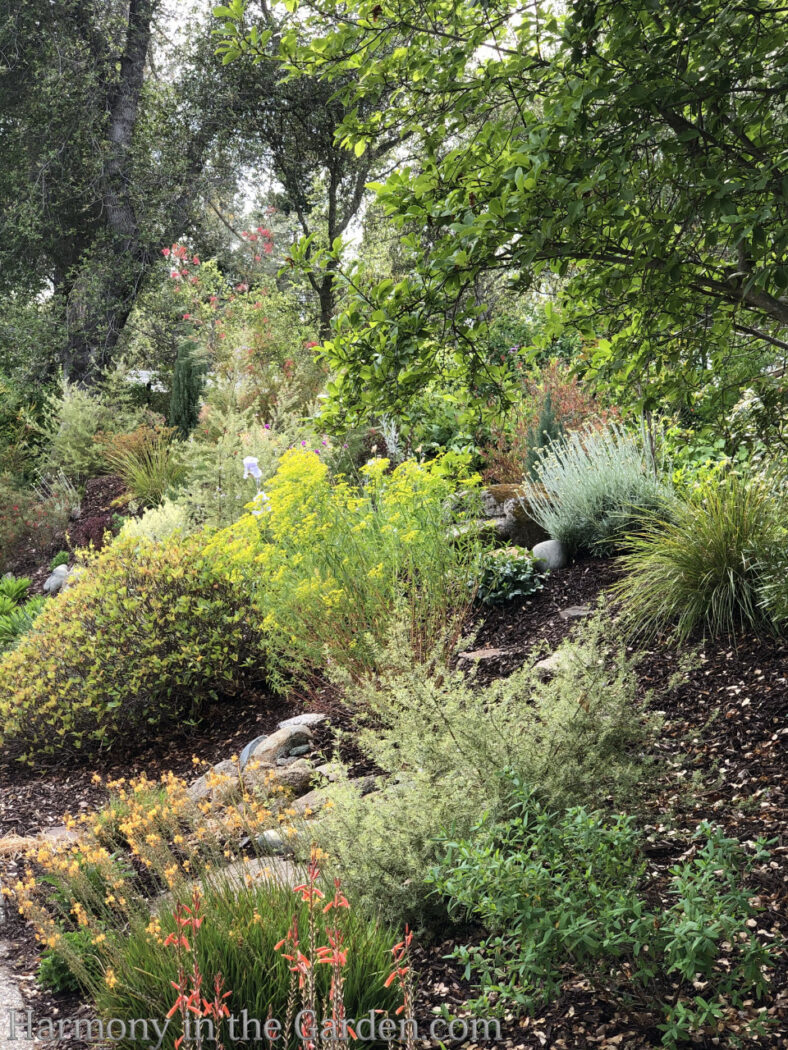
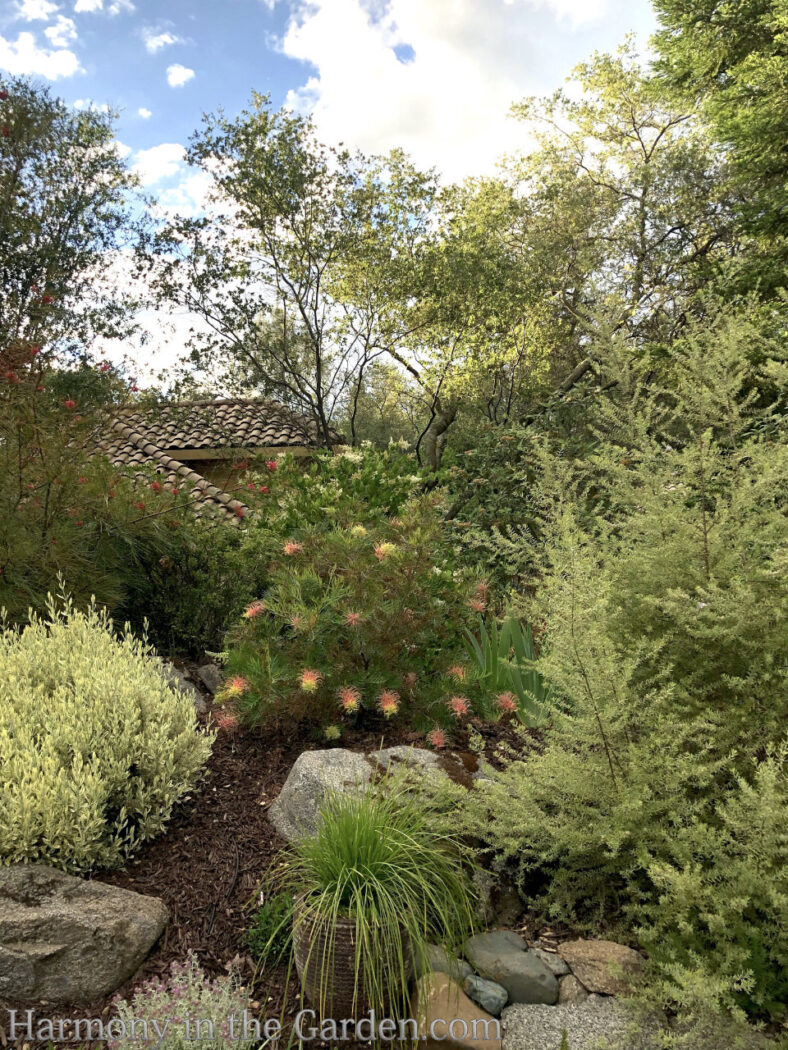






10 Comments
Thank you so much for the lovely garden post. It’s such an inspiration to me as I create my small suburban garden in the South of France (zone 9b). Some of the plants are difficult to source here (can’t figure out why as they are well suited) but I’ll keep looking. I’m also trying to source mulch in bulk which also difficult to find. Perhaps with global warming they will change their minds about mulching rather than just restricting water use.
Hello Susan, and nice to hear from you! It’s so frustrating when well-suited plants aren’t available, isn’t it? I’ve found the same thing here, as I read about amazing drought tolerant plants in Spain, etc. and can’t find them for the life of me here or on the internet. Thank heavens for online shopping, though, as I’ve been fortunate to find a few of my (now) favorites that I’ve never seen in a nursery. I didn’t realize mulch was so hard to find there, what do they want gardeners to use? I’ve seen gorgeous gravel gardens in Europe, which of course is another type of mulch and wonder if that would work for you? Maybe using a lot of evergreen ground covers, as well, to hold in the moisture?
Thanks for the mention of black bark. I always thought a fire had gotten out of control on landscapes using it.
Black bark is used a LOT where I live (interestingly enough, I rarely saw it when I lived in the Bay Area) and it looks nice enough when it’s new, or in the shade where it doesn’t bleach out as much, but unfortunately it just doesn’t hold up in the hot sun. My entire garden was so neglected it truly did look like it went through a fire.
Thanks for sharing your beautiful garden. I am looking forward to warmer weather to see how all the bulbs I planted last fall arrive this spring do and redesigning several beds. Your garden is so lovely and great ideas for shapes and textures but as it’s zone 6 where I live a lot of your plants would never survive here. Take care and keep sharing.
Hi Frieda, I always hesitate to write too much about plants that don’t grow in colder parts of the country, but hopefully it’ll at least give you some ideas of shapes/textures for more zone-appropriate plants. I do know that the groundcover euphorbia myrsinites does quite well in our zone 6 garden at Lake Tahoe (where mine is currently buried under 5-feet of snow) I’m always experimenting with plants (I suffer from zone denial big time!) and will keep you posted of happy surprises. Even though it’s not evergreen, have you tried calycanthus ‘aphrodite’? I’ve written about that plant a lot and LOVE it. It’s a biggie, but the flowers are amazing as are the apple-green, always fresh-looking foliage. Good luck with your bulbs, I hope you’re pleasantly surprised once they begin to pop up!
Your garden is so lovely, it is truly amazing and inspiring what you have been able to do in our hot climate. Thank you for sharing your pictures and the names of your favorite plants on Joe Hill.
Thank you, Vivian, as you know it’s certainly not easy in our climate! A lot of trial and error in terms of what can ‘really’ take the full sun. (btw: your salvia is growing like gangbusters and I can’t wait to see it’s bloom this year!) Happy Gardening!
Beautiful. Do you irrigate this space? If so, how?
Hi Kathleen, yes I irrigate my garden otherwise I’m afraid it’d look like the ‘before’ pics! We use individual emitters (usually .5gal/hour) for each plant to conserve water (vs. overhead sprayers, which evaporate faster and are less efficient.)